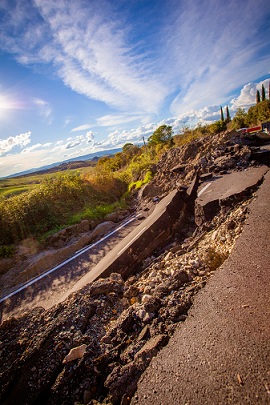Safer buildings, lower risks: reducing the damage caused by earthquakes in Europe

Related topics
Environment & climate action Belgium France Germany Greece Italy Portugal Romania United Kingdom Switzerland Environment Climate action, environment, resource efficiency and raw materials Norway Montenegro Algeria Turkeydate: 16/07/2014
Project: Seismic hazard harmonization in Europe
acronym: SHARE
See also: CORDIS
Contact: Contact
Nothing can be done to prevent earthquakes from occurring, and researchers are limited in forecasting when and where they will strike and how strong they might be. Fortunately, a great deal of progress is being made to ensure that buildings throughout Europe are designed and built to withstand major earthquakes when they strike.
A critical element of ongoing efforts to make our society safer against earthquakes is the European Union (EU)-funded SHARE project, or Seismic Hazard Harmonisation in Europe. This first-of-its-kind initiative aimed to develop a common methodology, tools and models to evaluate earthquake hazard in Europe. The project will also provide a harmonised input for the implementation of the European unified building code (EuroCode 8) that factors in the probability of an earthquake hitting anywhere in Europe.
EuroCode 8 is the EU standard that determines how buildings and other structures must be built in order to make them resistant to earthquakes. Eurocode 8 is being implemented to guide architects and engineers in designing buildings for a common level of earthquake risk.
The goal is for standard buildings to be designed and constructed in such a way that they could survive the strongest earthquake expected to strike at any given location in Europe within a 500-year period. In addition to new constructions, efforts are also being made to retrofit existing buildings to be more resistant to earthquakes.
“The final goal of the SHARE project is to ensure that we build safer houses and cities in Europe,” said SHARE coordinator Domenico Giardini of the Swiss Federal Institute of Technology in Zurich.
The fundamental concept of SHARE, Giardini said, is to assess the seismic hazard in a unified, harmonised manner, so that buildings across Europe are designed, constructed and protected in a consistent way. Buildings in higher-risk earthquake countries such as Greece and Turkey have to be built stronger than those in lower-risk countries like Germany and the UK. “The way we define ‘strong’ has to be different,” Giardini said, “but there needs to be consistency in how we design buildings in order to withstand earthquakes.”
SHARE’s researchers established this common level of risk by combining the location and strength of past earthquakes, the damage caused by earthquakes throughout Europe and the surrounding region, including parts of western Asia and northern Africa, the geological setting and active faults as well as the style and rate of deformation of the Earth’s crust measured by GPS. By funneling all of this information into one system, the SHARE team developed what is known as a “probabilistic seismic hazard assessment” or PSHA, which takes the best available knowledge to form the baseline for informed decision-making regarding building codes and insurance coverage.
“We have taken the inherited knowledge from the national, regional and local levels and strived to harmonise data across the entire Europe,” Giardini said. “Our work is the end result of science and engineering efforts carried out over many decades,” he added.
The SHARE partners included 18 universities, institutes and other research partners from 13 European countries and had a budget of €4.1 million, of which the EU contributed €3.2 million. In total, over three hundred experts from various fields collaborated to develop the SHARE model.
